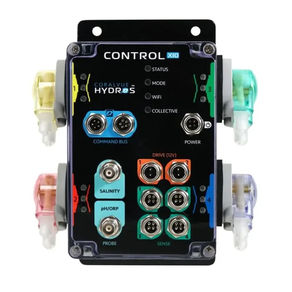top of page
Search
Which Salt Should I use..
Choosing the Right Salt Mix for Your Reef Aquarium: Maintaining a thriving reef aquarium begins with one of the most essential elements:...
Tropic N Reef
Jun 244 min read


Lets talk about Hydros Aquarium controllers.. Shall we??
Aquarium enthusiasts know that maintaining a thriving aquatic ecosystem requires precision, vigilance, and the right tools. One brand...
Tropic N Reef
Dec 15, 20245 min read


Strontium Additives for Reef Aquariums: Hell yaa.. Do we often forget dosing this..
Reef aquariums require a careful balance of elements to support the growth and health of corals and invertebrates. Among these essential...
Tropic N Reef
Nov 15, 20244 min read
Understanding pH and Its Importance in Aquariums
Maintaining the right pH level in your aquarium is essential for the health of your fish, corals, and overall aquatic environment. In...
Tropic N Reef
Nov 10, 20246 min read


Kalkwasser Reactors in the Reef Hobby:
In the marine and reefing hobby, maintaining optimal calcium and alkalinity levels is crucial for the health of corals, clams, and other...
Tropic N Reef
Oct 30, 20247 min read


Why You Should Never Add Tap Water Directly to Your Aquarium: Understanding the Risks and Solutions
For those new to the aquarium hobby, adding water to your tank might seem like a simple task: just turn on the tap and pour it in....
Tropic N Reef
Oct 24, 20245 min read
bottom of page
